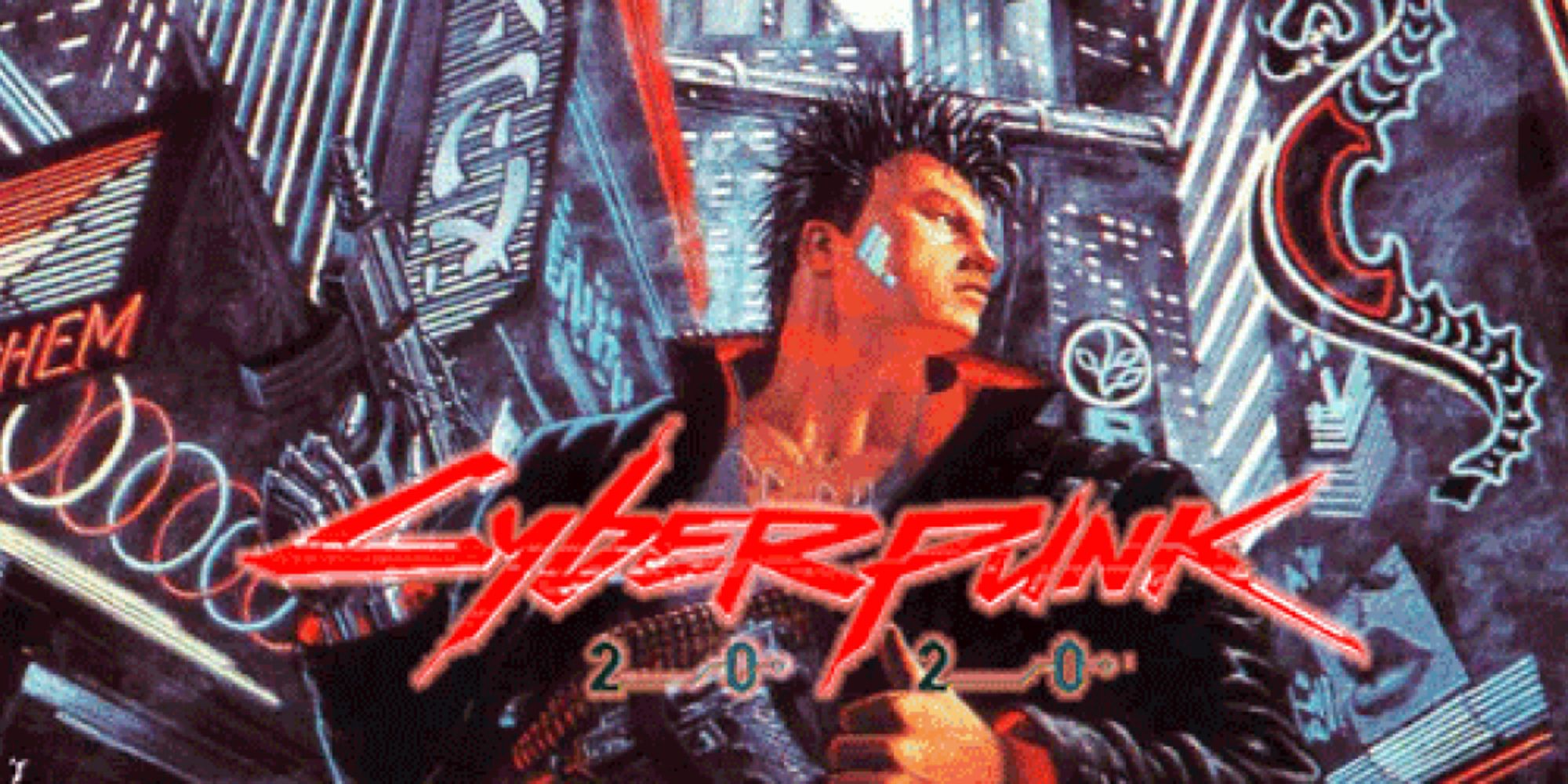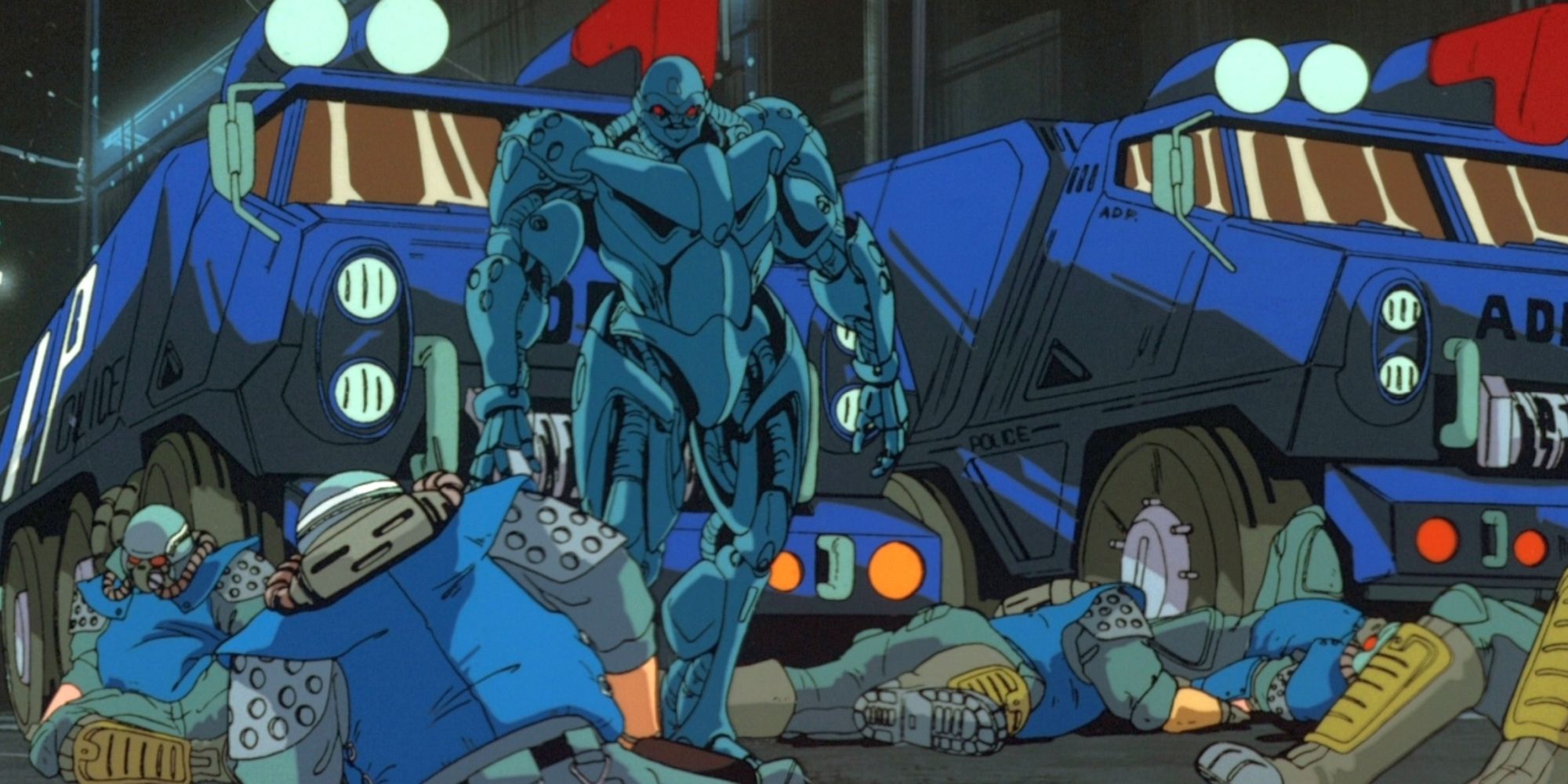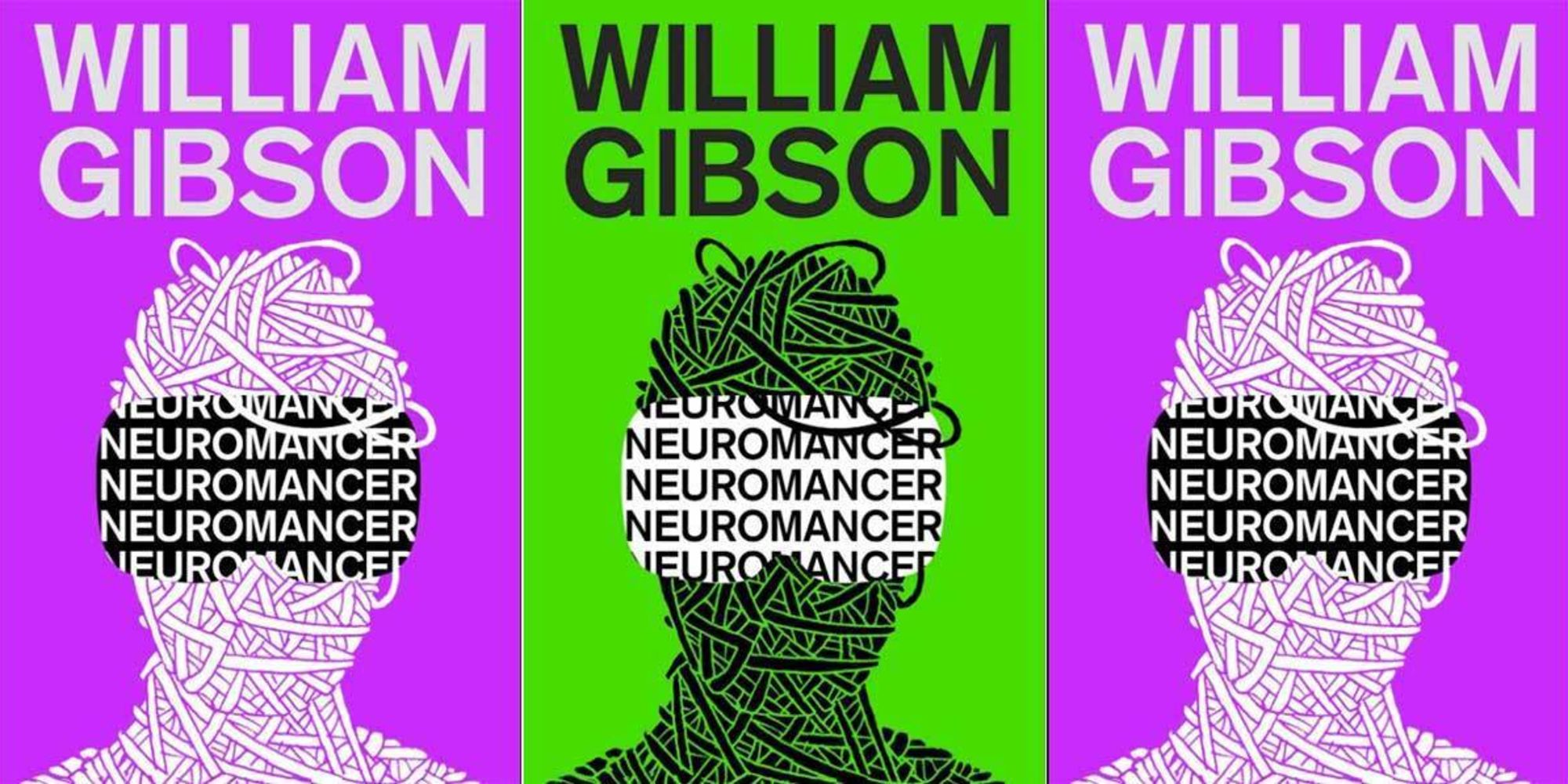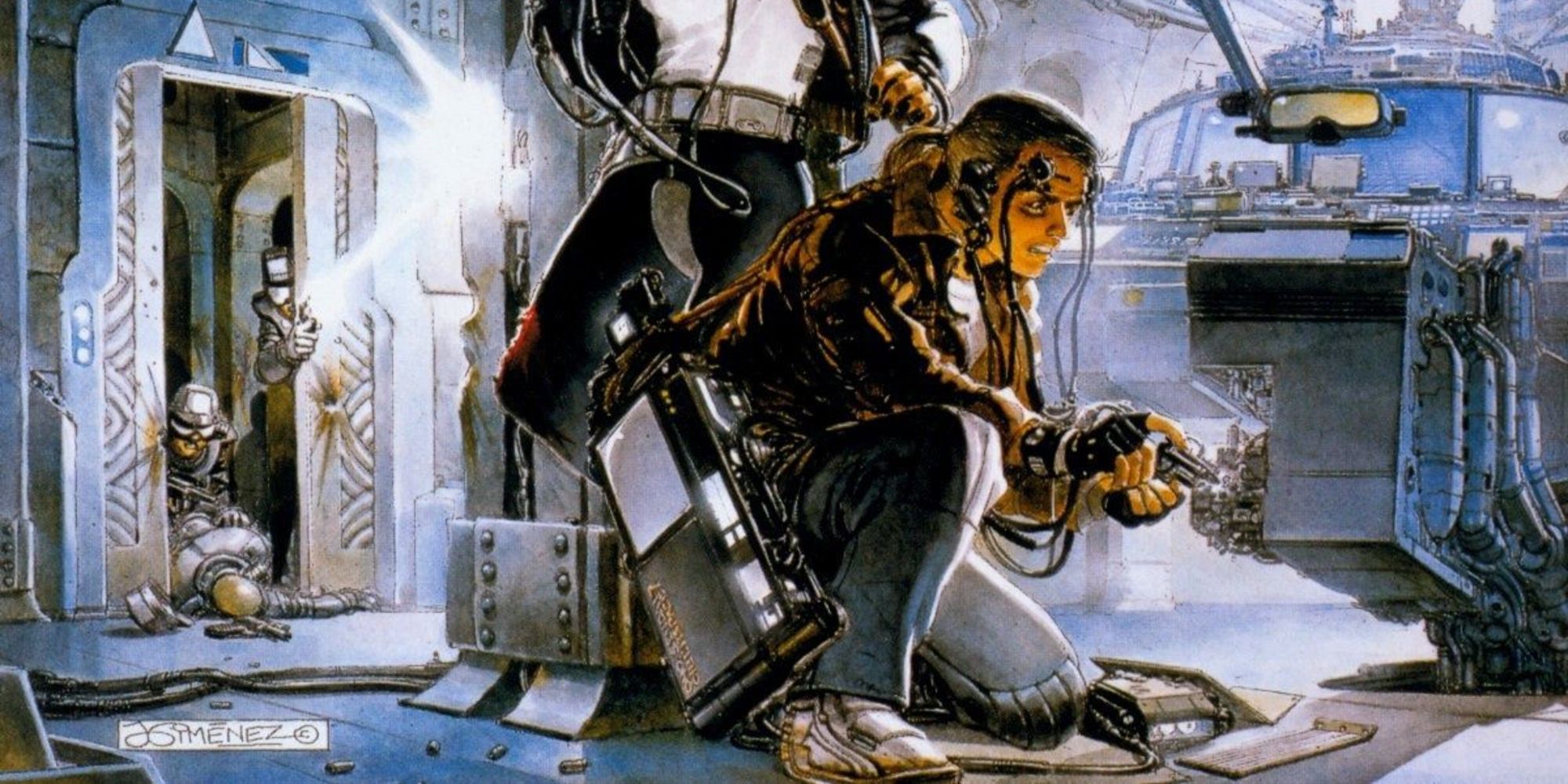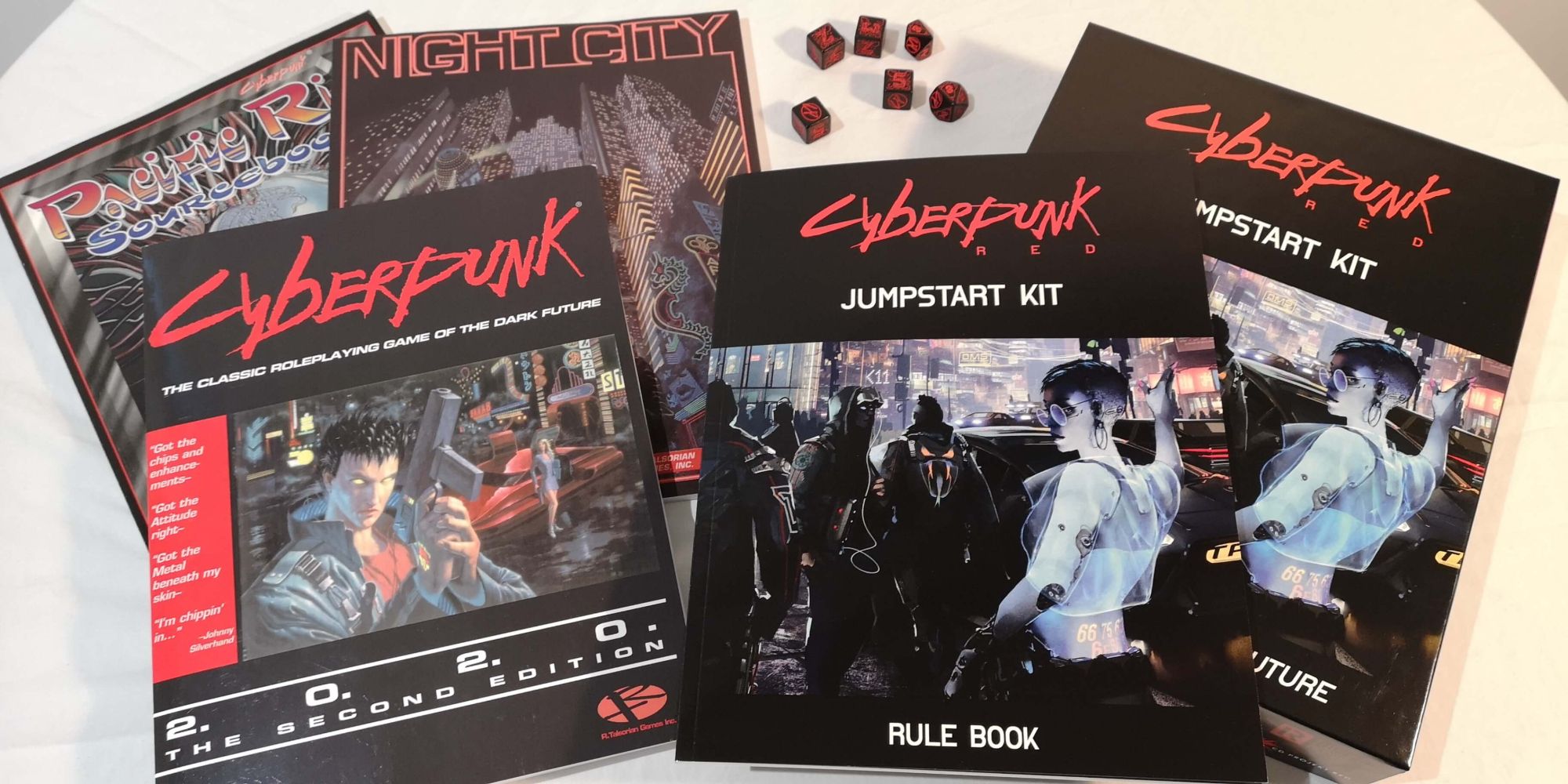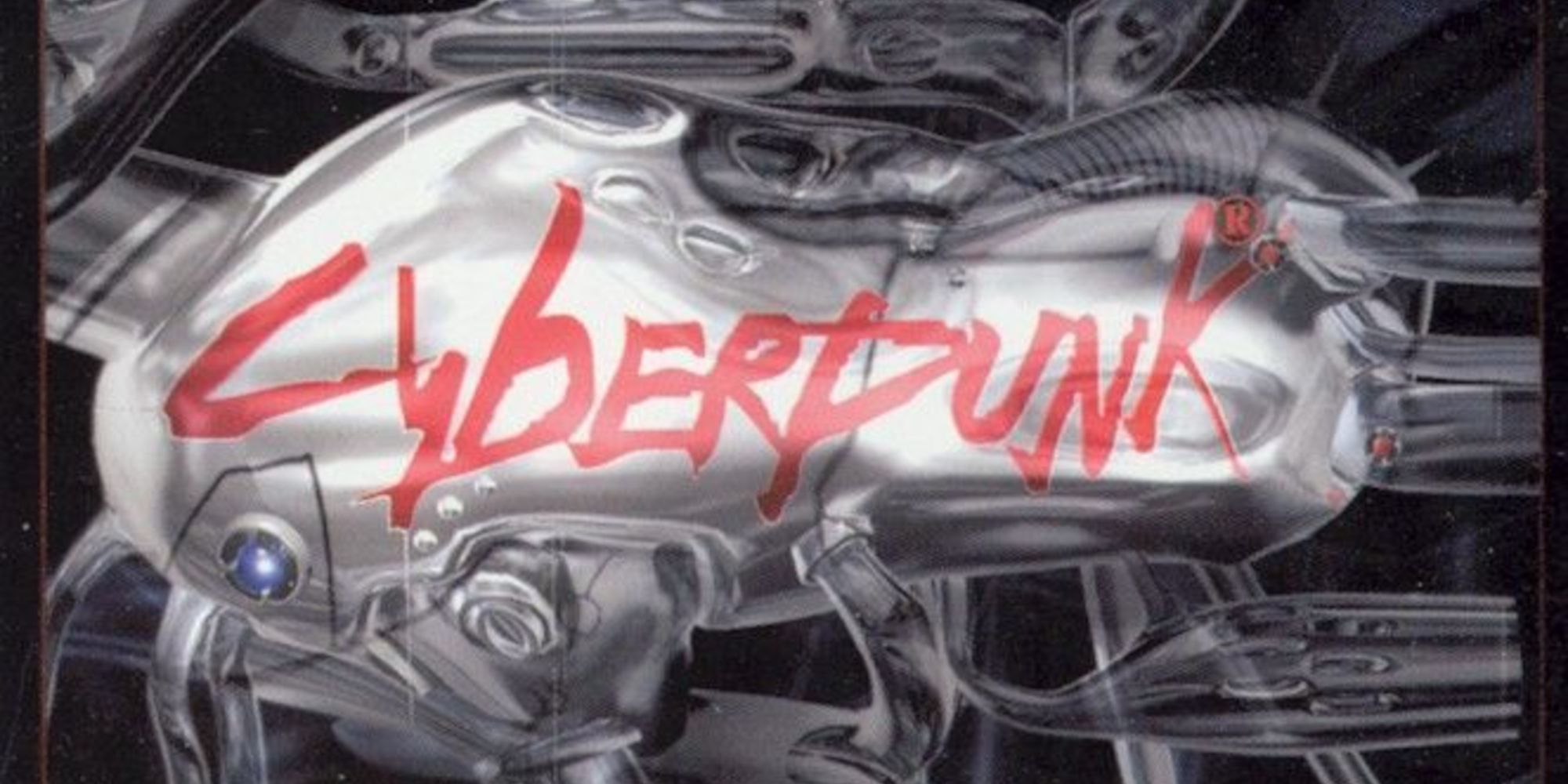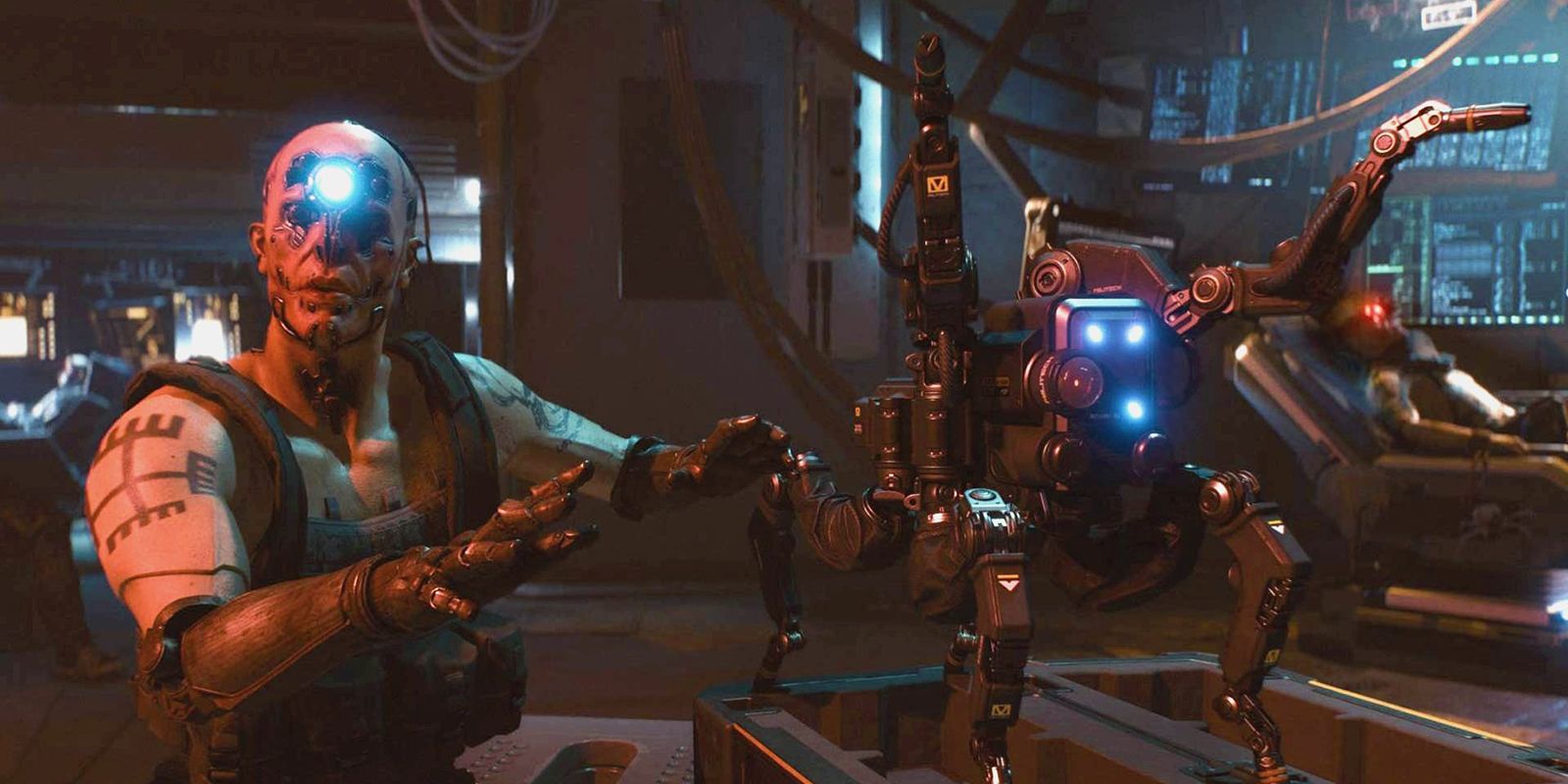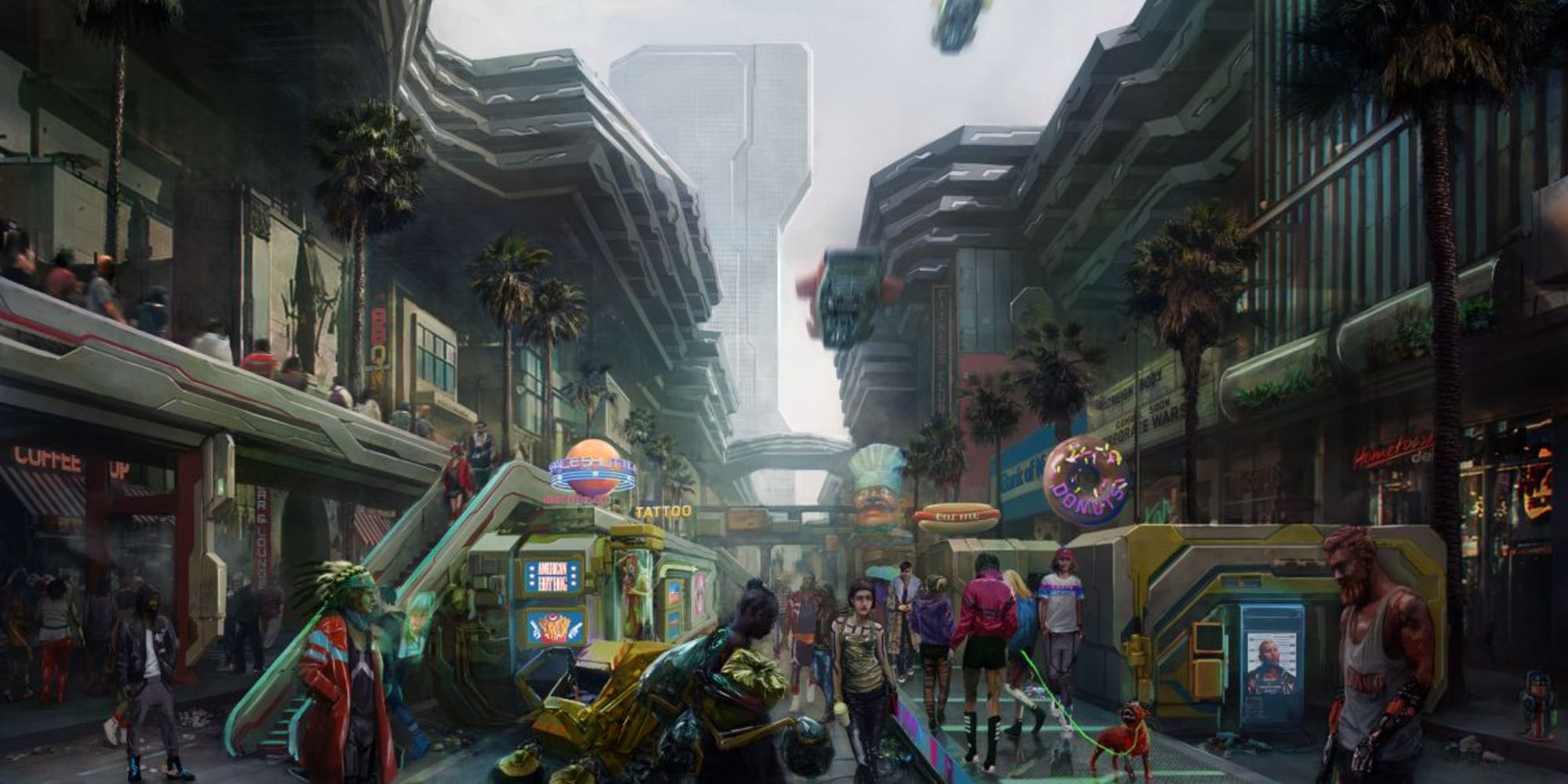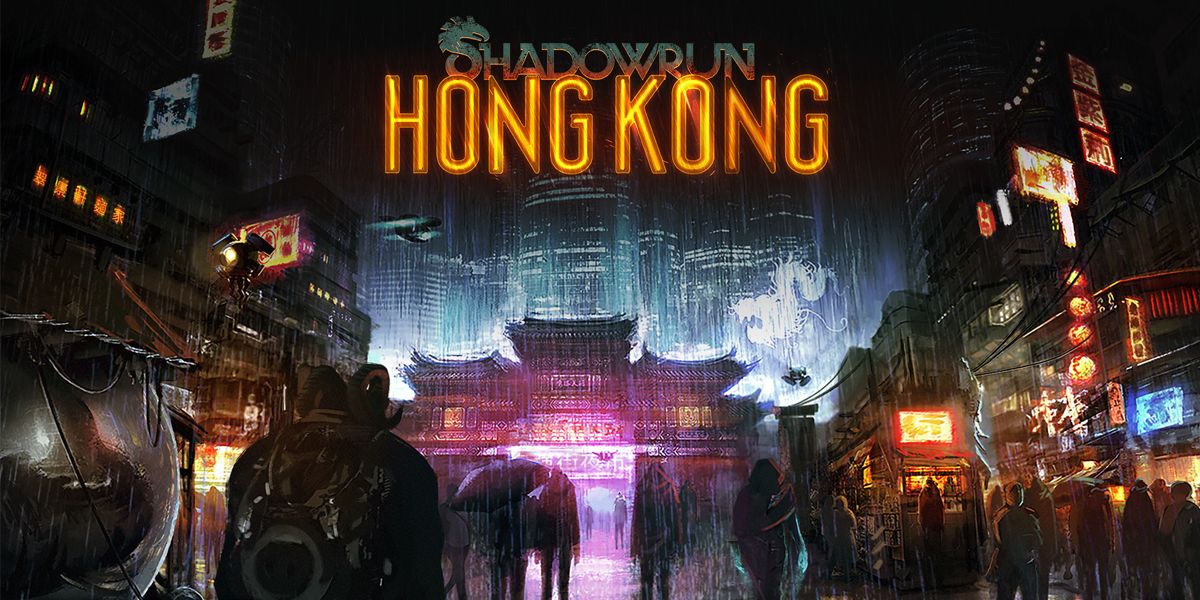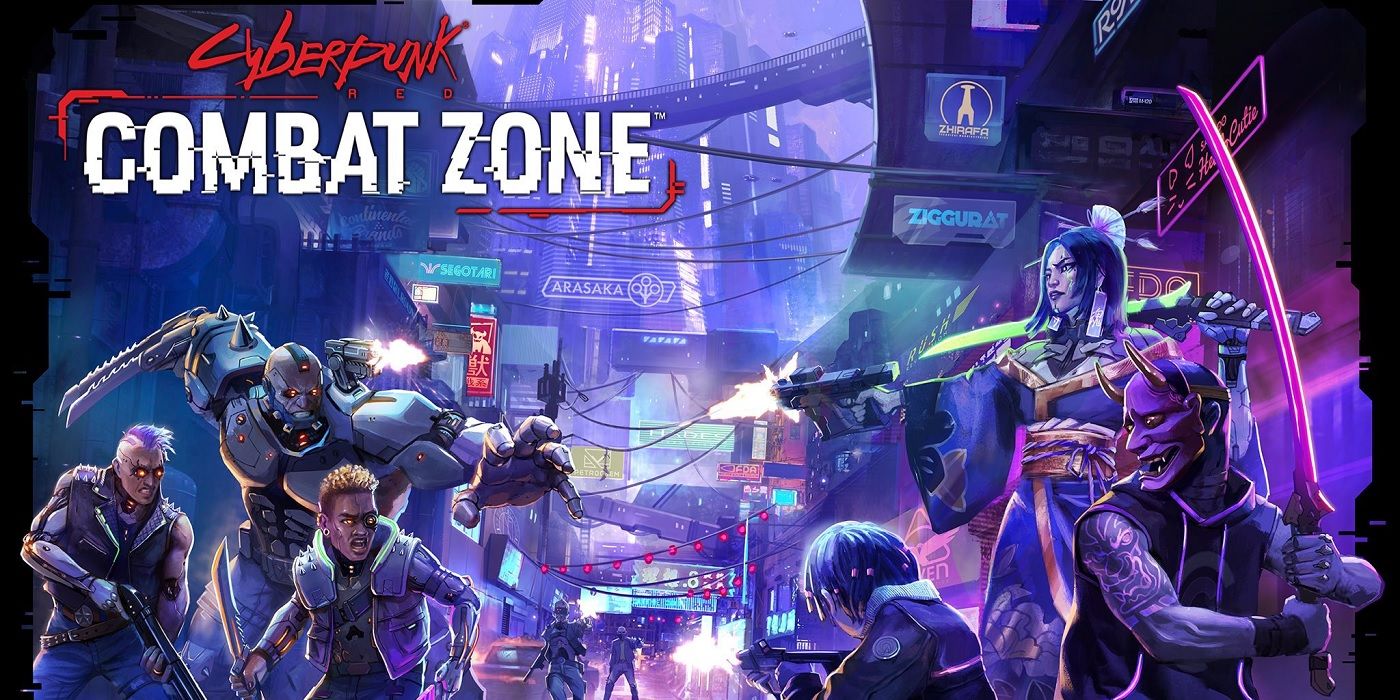With the soaring (then plummeting) popularity of 2020's Cyberpunk 2077, let's take a look at the RPG that started it all, Mike Pondsmith's 1988 tabletop RPG Cyberpunk 2.0.2.0. "The Roleplaying Game Of The Dark Future." In his creation of the game, Pondsmith looked to the gritty futurism of 80s cyberpunk, taking into account the many pieces to come before his, and looking to forge an original path while still hanging onto the core values of what cyberpunk as a medium really means.
Many gamers haven't played Cyberpunk due to the relative unavailability of its sourcebooks, matched with the much-larger popularity of other TTRPGs like Dungeons & Dragons taking the stage. While the original books are expensive or sold out on nearly every platform, Cyberpunk is full of surprises, and well-worth checking out with some friends with the new edition Cyberpunk Red.
10 The Game's Inspirations
While most cyberpunk media comes with an obvious inspirational track; Blade Runner, Ghost in the Shell, Terminator, etc., Pondsmith listed some intriguing references in various interviews about his RPG.
Of course, one of his main inspirations was Ridley Scott's Blade Runner (because what sci-fi work hasn't been inspired by Scott's cinematic masterpiece?), but Pondsmith also listed films like Streets of Fire, which was an obvious influence on his character Johnny Silverhand. Another fun reference is to the film Bubblegum Crisis, which takes a refreshing look at anti-corporation politics in the setting of MegaTokyo, after a mega-corp's robotic creations begin to run rampant.
9 Neuromancer's Absent Influence
Nearly everybody in the genre industry cites Neuromancer as at least a part of their inspiration, as William Gibson's book was one of the founding pieces of the genre. Pondsmith, however, didn't read the book until much later, to the surprise of many of his fans. Instead, the biggest inspiration on the game's setting was Walter Jon Williams' book, Hardwired.
Pondsmith was such a big fan, he even formed a friendship with Williams and got him on-board as a collaborator to playtest early versions of the game, which was pivotal in his later developments to the systems and setting.
8 Cyberpunk's Timeline Crisis
2.0.2.0. is actually the second of four editions of the game, all taking place between the years 2013-2045. The only problem with these releases (spanning 1988-2020) is the divergent political timeline that makes inter-edition plot lines a bit confusing. The second edition, 2.0.2.0., added several supplement rulebooks, including a non-canon adventure in which nanotech viruses give teenagers unusual superhuman abilities, and a second that adds a fantasy-horror spin with vampires and werewolves. The third edition brings players to the future, after a fourth Corporate War, which is then thrown away as non-canon in the fourth edition, and replaced with a different fourth Corporate War.
Because of the nature of roleplaying games, none of this was very detrimental to players, but the multiple lore-shifts become extremely confusing in roleplaying sections (especially if players have experienced playing in different timelines and don't take thorough notes).
7 The First Good Cyberpunk Game?
The medium, having been around for quite a while before the release of the RPG, had a surprising lack of interactive media representation until Pondsmith came around.
Considering the intertwined souls of cyberpunk and video games, it seems like it would have been a natural inclusion in the industry, instead of the countless early-era fantasy games. Instead, the genre was populated with licensed games like Blade Runner and Max Headroom, neither of which took inspiration from the cyberpunk movement more than just translating the "cool parts" of the movies into an interactive space.
6 Tabletop Spin-Offs
Aside from the four main editions of the Cyberpunk RPG, only a handful of physical spin-offs were ever produced, including a couple of collectible card games (in the wake of Magic: The Gathering and Pokemon's popularity), and quite a few homebrewed Dungeons & Dragons conversions.
The first of two CCGs was titled Netrunner, released in 1996 by Wizards of the Coast (the game later diverged from the Cyberpunk canon and got a re-release titled Android: Netrunner). Netrunner was well received in the time it was still being produced, but it was eventually replaced by a new game simply titled Cyberpunk CCG, which was much less entertaining to fans of the original and quickly fell out of relevance.
5 Video Game Adaptations
Aside from CCGs Netrunner and Cyberpunk CCG, there weren't too many other takes on Pondsmith's work. Only two direct video game adaptations were ever released, CDPR's 2077 and a 2007 platformer titled Cyberpunk: The Arasaka's Plot, which came out to little fanfare.
Cyberpunk 2077 is a direct sequel to the TTRPG, retconning a few bits and pieces to fit their version of the world, and shifting the classic RPG into new, modern mechanics. The Arasaka's Plot, on the other hand, is fairly inconsequential to the main game's story, following a man's journey to find himself after being betrayed by a mega-corp who had previously hired him as a hitman.
4 Cyberpunk Novelizations
On top of the core rulebooks and their lore guides and setting overviews, Cyberpunk 2.0.2.0. also published novel tie-ins, most of which were reviewed poorly or ignored completely.
The six novels, released between 1993 and 1994, all followed the same timeline as 2.0.2.0., but were brushed off into a "canon grey-zone" as readers seemed uninterested and their plots weren't heavily related to the events of the main game. These novels are a little hard to track down, only briefly mentioned in the game's Wikipedia article, and a few times in shoddy reviews on various forums.
3 A Dedicated Safe Space
Much like D&D, the Cyberpunk TTRPG was popular among members of fringe and minority communities for being a cultural safe-space focused on bringing players together (especially considering cyberpunk gained traction in the 80s and 90s, with its heavy involvement in civil rights, trans representation, diversity, and anti-corporation outlooks). The world of Cyberpunk exists in a post-discriminatory future, where races have more or less blended together, sexuality is embraced, and unity is the headstone of culture.
CDPR's conflicted response to the genre's conventions in their adaptation is highlighted well in an article by Stacey Henley, and another by Alexis Ong, who take a deeper look at what made the genre so appealing to so many people in the first place. A lot of these same people took it upon themselves to make their own pieces, which became a highlight of last year's gaming news on Twitter and indie platforms.
2 Cyberpunk's Subtle Impacts
Being the first tabletop RPG to adapt the formula to the genre, Cyberpunk indirectly inspired a good amount of future content, including popular franchises like Shadowrun, which adds its own flair in the form of fantasy futurism.
Plenty of other media would take into account the mechanics founded by the tabletop game, whether it was the humanity system that adapts to players' cyborg mods or the fun side stories presented in Night's Edge and Cybergeneration. Turns out, there's a lot to love in the expansive Night City, and a neverending pool of inspiration leading back to Pondsmith's inspirations and the world of early genre media.
1 Cyberpunk's Not Dead
Despite the recent release of Cyberpunk 2077, and its presumed subsequent deathgrip on the series' relevancy, the tabletop RPG hasn't died off quite yet. Pondsmith is still working with R. Talsorian games (the publishers of the original editions) to continue his vision of the pen-and-paper adventure.
The fourth and newest release is titled Cyberpunk Red, and is readily available through the site's shop, as well as comic and hobby shops in various cities. There is also a tabletop miniature wargame titled Combat Zone set to be released this year by R. Talsorian and Monster Fight Club.

